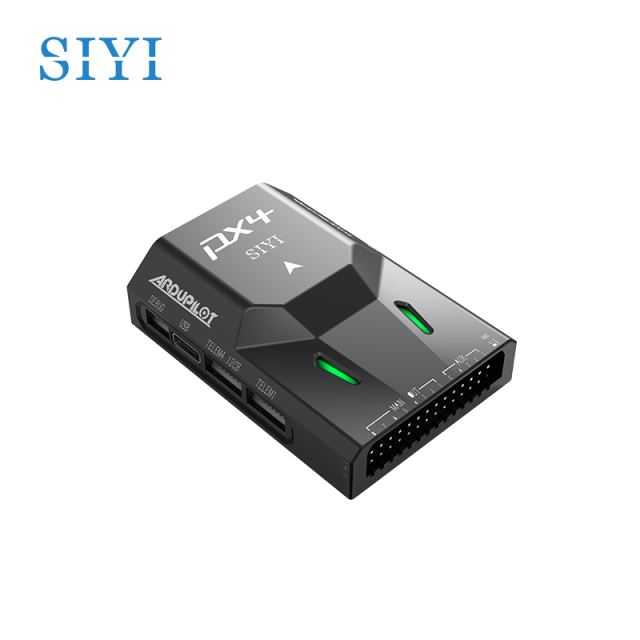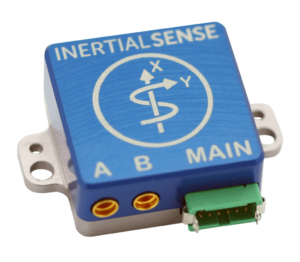The Prospective of UAVs: SparkNavi Drone Flight Controller and GNSS/INS Made in Taiwan
The Significance of Drone Trip Controllers in Modern Aerial Innovation: Secret Parts and Their Influence
In the world of modern-day airborne technology, drone trip controllers offer as the essential systems that manage a drone's performance and capabilities. As markets progressively depend on drones for applications ranging from agriculture to surveillance, the advancing technology within trip controllers raises critical inquiries regarding their future influence and possible developments.

Overview of Drone Flight Controllers
In the realm of aerial technology, drone flight controllers work as the vital brain of unmanned airborne cars (UAVs), enabling precise maneuverability and stability during flight. These innovative systems incorporate sensing unit data, refining formulas, and control inputs, enabling drones to carry out complex trip patterns with accuracy.
Drone flight controllers make use of various sensing units, such as gyroscopes, accelerometers, and GPS components, to evaluate the UAV's alignment and position in real-time. This details is important for maintaining equilibrium and ensuring safe procedure in diverse ecological problems. The controllers process this information to make instant changes to the drone's electric motors, permitting smooth changes and responsive handling.
In addition, trip controllers are geared up with advanced software program that sustains features such as waypoint navigating, barrier evasion, and autonomous flight capacities. This software application is essential for both business and leisure applications, where reliability and accuracy are extremely important. As drone modern technology remains to development, the evolution of trip controllers will certainly play an essential duty in enhancing UAV safety and security, performance, and flexibility, ultimately broadening their applications throughout numerous markets.
Key Components Explained
Recognizing the basic components of drone trip controllers is vital for realizing exactly how these systems run effectively. At the heart of a flight controller is the microcontroller, which functions as the mind, refining information from different sensors and carrying out commands. Important sensing units include gyroscopes and accelerometers, which gauge the drone's positioning and motion, supplying crucial comments for stablizing.
Another trick element is the barometer, which assesses elevation by gauging atmospheric pressure, while general practitioner modules provide positional information, allowing autonomous navigation - SparkNavi drone flight controller and GNSS/INS made in taiwan. The flight controller likewise interfaces with Electronic Rate Controllers (ESCs), which control the rate of the drone's motors based on the controller's commands
Communication components, such as radio receivers, facilitate remote input, permitting drivers to send out commands in real-time. Furthermore, some trip controllers integrate software program that can handle intricate formulas for waypoint navigation, flight preparation, and telemetry information evaluation.
Role in Trip Stability
Central to keeping flight stability, drone trip controllers make use of advanced formulas to refine sensor data and make real-time adjustments. These controllers are geared up with a selection of sensors, consisting of measures, gyroscopes, and accelerometers, which continually check the drone's speed, positioning, and elevation. By interpreting this data, the trip controller can recognize discrepancies from the preferred flight course and respond without delay to keep security.
For circumstances, if a drone experiences an unforeseen gust of wind, the flight controller can rapidly readjust the electric motor rates to counteract the disturbance, ensuring a consistent trip trajectory. This capability is crucial not only for hands-on flight operations yet additionally for performing complex maneuvers and maintaining smooth trip in numerous environmental conditions.
.png)
Additionally, the innovative algorithms utilized in trip controllers, such as PID (Proportional-Integral-Derivative) control, enable for fine-tuning of the drone's reaction to adjustments in flight problems. By maximizing these control criteria, trip controllers can boost stability, boost responsiveness, and reduce pilot work. Inevitably, the role read review of trip controllers in making certain trip security is important for the reliable and risk-free operation of modern-day drones throughout diverse applications.
Effect On Autonomous Workflow

Autonomous procedures are particularly essential in diverse applications such as shipment, agriculture, and surveillance solutions. With enhanced flight controllers, drones can autonomously browse fixed courses, effectively collect data, and adapt to dynamic settings. This ability minimizes the need for consistent human oversight, thereby enhancing functional effectiveness and safety and security.
Additionally, the implementation of device discovering techniques within flight controllers enables drones to enhance their efficiency with time by picking up from previous goals. This versatility leads the way for a lot more advanced self-governing applications, such as flock innovation, where numerous drones collaborate their actions to achieve a typical goal.
Future Trends in Trip Controllers
Innovations in flight controller innovation are poised to revolutionize drone capabilities in the coming years. One significant fad is the integration of fabricated knowledge (AI) and maker discovering algorithms, allowing drones to pick up from see this their atmospheres and make real-time decisions. This improvement will boost autonomous navigating, challenge avoidance, and objective preparation, substantially boosting functional effectiveness and safety.
In addition, the development of sophisticated sensor innovations, such as LiDAR and multispectral imaging, will certainly offer flight controllers with richer data inputs. This will certainly assist in extra sophisticated logical capacities, allowing drones to carry out complex tasks, such as precision rescue, farming and search, and infrastructure examinations with unprecedented precision.
Another emerging fad is the miniaturization of flight controller components, which will certainly lead to lighter and more small drones. This evolution will prolong trip periods and haul capabilities, making drones much more functional for numerous applications.
Conclusion
In conclusion, drone trip controllers work as vital parts in contemporary airborne innovation, ensuring security and precision in maneuverability with the integration of microcontrollers, accelerometers, and GPS components. SparkNavi drone flight controller and GNSS/INS made in taiwan. Their ability to allow autonomous procedures and adjust to numerous applications underscores their value across several sectors. As advancements in man-made intelligence and sensor technology proceed to arise, the possibility for improved capabilities and enhanced functional performance in drone systems will likely improve the future of airborne applications
Central to keeping trip security, drone trip controllers use advanced algorithms to refine sensor data and make real-time changes. By analyzing this information, the flight controller can identify inconsistencies from the desired trip path and react without delay to keep security.
Additionally, the innovative formulas used in trip controllers, such as PID (Proportional-Integral-Derivative) control, permit for fine-tuning of the drone's action to changes in trip conditions. Inevitably, the function of trip controllers in ensuring flight stability is crucial for the effective and risk-free operation of modern-day drones throughout diverse applications.
The developments in drone trip controllers not just improve trip security however additionally substantially influence independent procedures. SparkNavi drone flight controller and try these out GNSS/INS made in taiwan.